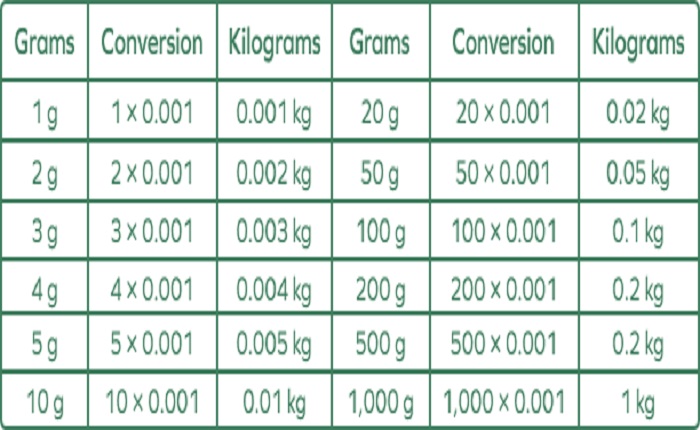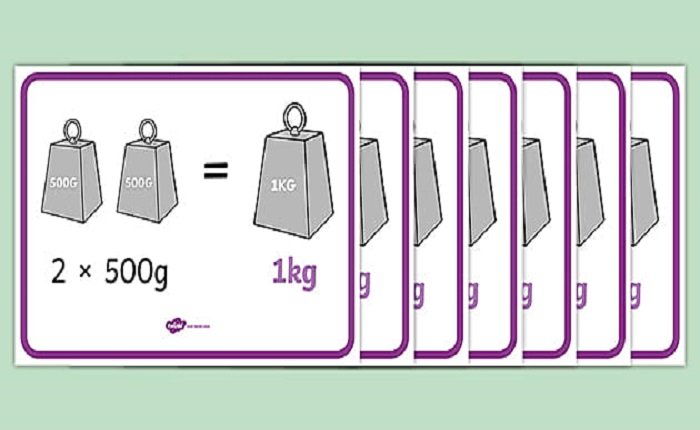G to KG: The Complete Guide to Understanding and Converting Grams to Kilograms

Introduction
The conversion from g to kg is a fundamental concept in the metric system. Whether you’re measuring ingredients in the kitchen, calculating weights in science, or working on everyday tasks, knowing how to convert grams (g) to kilograms (kg) is essential. In this comprehensive guide, we will explore everything you need to know about converting g to kg, including the science behind the units, practical tips, and helpful examples.
What Are Grams and Kilograms?
Before diving into the g to kg conversion, it’s important to understand what grams and kilograms represent. Both grams and kilograms are units of mass used in the metric system, which is the standard measurement system in most countries around the world. The gram (g) is used for smaller measurements, while the kilogram (kg) is the standard unit for larger mass measurements. The key to converting g to kg lies in understanding their relationship.
The Metric System: A Quick Overview
The metric system, where g to kg conversions take place, is an internationally recognized decimal-based system of measurement. It’s built on powers of ten, which makes g to kg conversion straightforward. In the metric system, 1 kilogram is equal to 1,000 grams. This simple relationship between g to kg makes conversions easy and allows for more consistent and universally understood measurements, whether in science, industry, or daily life.
The G to KG Conversion Formula
To convert g to kg, you can use a simple mathematical formula:
Kilograms=Grams1000\text{Kilograms} = \frac{\text{Grams}}{1000}
This formula shows that dividing the number of grams by 1,000 gives the equivalent weight in kilograms. For example, if you want to convert 5,000 grams to kilograms, you would calculate:
5000 g÷1000=5 kg5000 \, \text{g} \div 1000 = 5 \, \text{kg}
This conversion is essential in many practical applications, from cooking to engineering, where precise measurements are required.
Practical Examples of G to KG Conversion
Understanding the g to kg conversion becomes easier when you see it in action. Let’s look at a few practical examples:
- Example 1: You have 250 grams of sugar, and you need to convert it to kilograms. Simply divide 250 by 1,000, which equals 0.25 kg.
- Example 2: A bag of flour weighs 1,200 grams. Using the g to kg conversion, 1,200 grams is equivalent to 1.2 kg.
- Example 3: You need to weigh a 3,750-gram item. Convert it by dividing 3,750 by 1,000, giving you 3.75 kg.
These examples highlight how simple and versatile g to kg conversions can be.
Why G to KG Conversion is Important
The ability to convert g to kg is important for several reasons. First, it ensures consistency in measurements, especially in industries like pharmaceuticals, food production, and science, where accuracy is critical. Second, the g to kg conversion allows you to handle larger or smaller quantities efficiently without confusion. Finally, it makes international communication easier, as the metric system is used in most countries, ensuring that weights and measures are universally understood.
Common Applications of G to KG Conversion
The g to kg conversion is applied in numerous everyday tasks and professional fields. Here are some common applications:
- Cooking: Recipes often require you to convert g to kg when scaling up or down ingredients.
- Education: Students learn the g to kg conversion in science and math classes, especially when conducting experiments that involve mass.
- Healthcare: Pharmacists and healthcare providers use g to kg conversions when prescribing medications and measuring dosages.
- Shipping and logistics: Converting g to kg is essential for calculating shipping weights and costs.
In each of these fields, knowing how to quickly convert g to kg is an indispensable skill.
Tools for Converting G to KG
While it’s useful to know the formula for converting g to kg, modern technology offers tools that make conversions even easier. Some common tools include:
- Online converters: Many websites and apps offer free g to kg conversion calculators.
- Mobile apps: Dedicated apps allow you to convert g to kg on the go, making it convenient for various tasks.
- Smart assistants: Virtual assistants like Siri or Google Assistant can perform g to kg conversions instantly when you ask.
- Conversion tables: Printable conversion charts offer a quick reference for converting g to kg without needing any electronic devices.
These tools help simplify the g to kg conversion process, especially when you’re dealing with large numbers or need to perform multiple conversions quickly.

How to Avoid Common G to KG Conversion Mistakes
Even though the g to kg conversion is straightforward, it’s easy to make mistakes if you’re not careful. Here are some tips to avoid errors:
- Double-check your calculations: Always verify your math when converting g to kg, especially in critical applications like medication dosage or scientific experiments.
- Be mindful of units: Ensure you’re converting the right units (grams to kilograms) and not confusing them with other weight units like pounds or ounces.
- Use parentheses in calculations: When dealing with multiple steps in a calculation, use parentheses to make sure the g to kg conversion is performed correctly.
- Cross-reference with tools: Use online or app-based conversion tools to cross-check your manual conversions.
By following these steps, you can confidently perform g to kg conversions without making critical errors.
The Role of G to KG in Science and Industry
In scientific research and industrial applications, accurate g to kg conversions are crucial. For example, in chemical laboratories, converting measurements from g to kg is essential when preparing compounds or scaling up reactions. Similarly, in the manufacturing industry, raw materials are often measured in kilograms, and precise g to kg conversions are necessary to ensure product quality and consistency.
Converting Back: KG to G
In some cases, you may need to reverse the conversion and go from kilograms to grams. The formula for converting kilograms back to grams is:
Grams=Kilograms×1000\text{Grams} = \text{Kilograms} \times 1000
For instance, if you have 3.5 kilograms and need to convert it to grams, multiply 3.5 by 1,000, giving you 3,500 grams. This conversion is just as important as the g to kg process, especially when working with smaller quantities.
Quick G to KG Conversion Reference Chart
Having a quick reference for g to kg conversions can save time, especially in high-pressure situations. Here’s a small chart to guide you:
| Grams (g) | Kilograms (kg) |
|---|---|
| 1 g | 0.001 kg |
| 100 g | 0.1 kg |
| 500 g | 0.5 kg |
| 1,000 g | 1 kg |
| 2,500 g | 2.5 kg |
| 5,000 g | 5 kg |
| 10,000 g | 10 kg |
This chart provides a quick way to convert common values from g to kg without needing a calculator.
G to KG Conversion in Global Use
The g to kg conversion is standard in most countries, especially those that use the metric system. The ability to convert g to kg is particularly important in international trade, where accurate weight measurements are critical for everything from product pricing to shipping logistics. The global adoption of the metric system means that understanding the g to kg conversion is essential for anyone working in fields that involve international cooperation.
Conclusion
Understanding the g to kg conversion is a fundamental skill that is useful in everyday life, education, science, industry, and beyond. Whether you’re following a recipe, conducting a scientific experiment, or shipping goods, knowing how to convert g to kg ensures accuracy and consistency. By using the simple formula and applying the tips shared in this guide, you can master the g to kg conversion with ease and confidence.
FAQs
1. How do you convert g to kg?
To convert g to kg, simply divide the number of grams by 1,000. For example, 500 grams is equal to 0.5 kilograms.
2. What is the formula for g to kg?
The formula for converting g to kg is:
Kilograms=Grams1000\text{Kilograms} = \frac{\text{Grams}}{1000}
This means you divide the number of grams by 1,000 to find the equivalent in kilograms.
3. Why is it important to know g to kg conversions?
Knowing the g to kg conversion is important because it helps ensure accurate measurements in cooking, science, industry, healthcare, and everyday tasks, where precise weights are crucial.
4. How many grams are in 1 kilogram?
There are 1,000 grams in 1 kilogram, making g to kg conversions easy by dividing or multiplying by 1,000.
5. Are there tools to help with g to kg conversions?
Yes, there are many tools available for g to kg conversions, including online calculators, mobile apps, and smart assistants like Google or Siri. You can also use conversion tables for quick reference.




